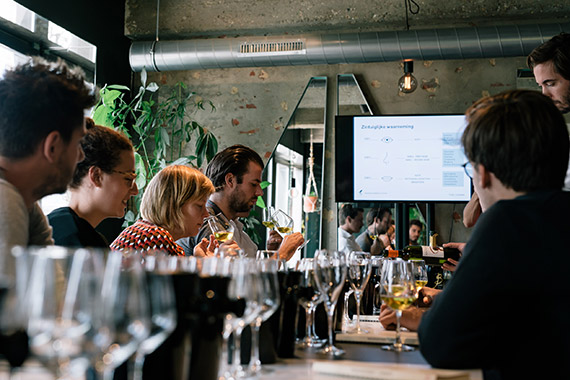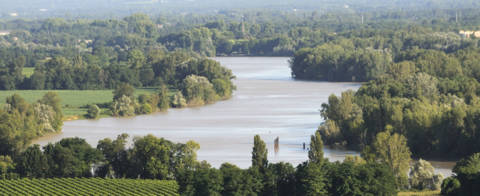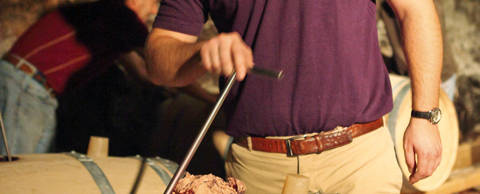The necessary cookies allow the site to function properly.
1 - Winemaking
Different winemaking methods aim to highlight the properties and natural qualities of the grapes. No matter how advanced the technique that is used, it must always remain subject to the earth and nature.
The grapes are harvested plot by plot, each variety separately. Then, at the winery, they go through parallel winemaking processes, depending on the variety and geographical origin of the grape. Each of these winemaking steps is a human-controlled process, based on prior tasting and know-how.
Producing red wine
Bordeaux red wines are made from dark-skinned grapes with white juice. They obtain their red colouring and tannins by extracting the latter from the skin and soaking the skins in the juice during maceration. This process of maceration provides the wine with its aroma and tannic structure.
Producing dry white wine
In Bordeaux, all dry white wines are made from white grapes. Unlike its red counterpart, white wine does not require the extraction of colour and tannins, so any type of maceration must be avoided. As with red wine, each step of the winemaking and maturation process is controlled by people, based on prior tasting and human know-how.
Producing sweet white wine
Sweet white wines are produced from grapes affected by noble rot The region’s exceptional microclimate promotes the development of Botrytis Cinerea, also called noble rot. This microscopic fungus attaches itself to ripe grape seeds, dries out the berries and turns them into concentrated sugars – a phenomenon that intensifies the aromas of the fruit. Unlike dry white wines, which contain less than 4 grams of sugar per litre after fermentation, they are rich in residual (non-fermented) sugar, containing 4 grams per litre or more.
Once they arrive at the wine cellar, the (non-destemmed) harvested grapes are quickly crushed and then pressed. Pressing the grapes is a slow and difficult process as the juices are extremely concentrated, which limits the flow. After racking ,the must is allowed to slowly ferment.
Next, the wine is bottled, cooled and sulphurised They then go through a period of maturation, which usually lasts a lot longer for these wines than it does for their dry white and red counterparts.
Producing rosé or clairet
Contrary to popular belief, rosé wines are not made from a mixture of red and white wine - they are produced from the must of dark-skinned grapes with white juice, which is processed in a specific way.
There are 2 types of rosé in Bordeaux.
- Bordeaux rosé
The juices can be extracted by pressing the grapes or also by bleeding the vat, which is a more traditional way of working.
The resulting light pink juice does not contain any tannins.
- Bordeaux clairet
The Bordeaux clairet is a speciality with a long tradition. It is half way between a rosé and a red wine. With 24 to 36 hours, it undergoes a longer maceration process than rosé wine, after which the juice is extracted by bleeding. The result is a pretty, raspberry-coloured wine with a fruity and round flavour, which contains more tannins than rosé wine.
Producing sparkling wine/Crémants
The Crémants or sparkling wines are white or rosé wines with bubbles, produced according to the specifications used for all French sparkling wines.
The grapes are allowed to mature, harvested manually (as stipulated by the Crémant appellation laws) and then transported in loose containers to allow the juices to keep flowing. The entire harvest is then put in a press, without crushing or destemming the grapes.


